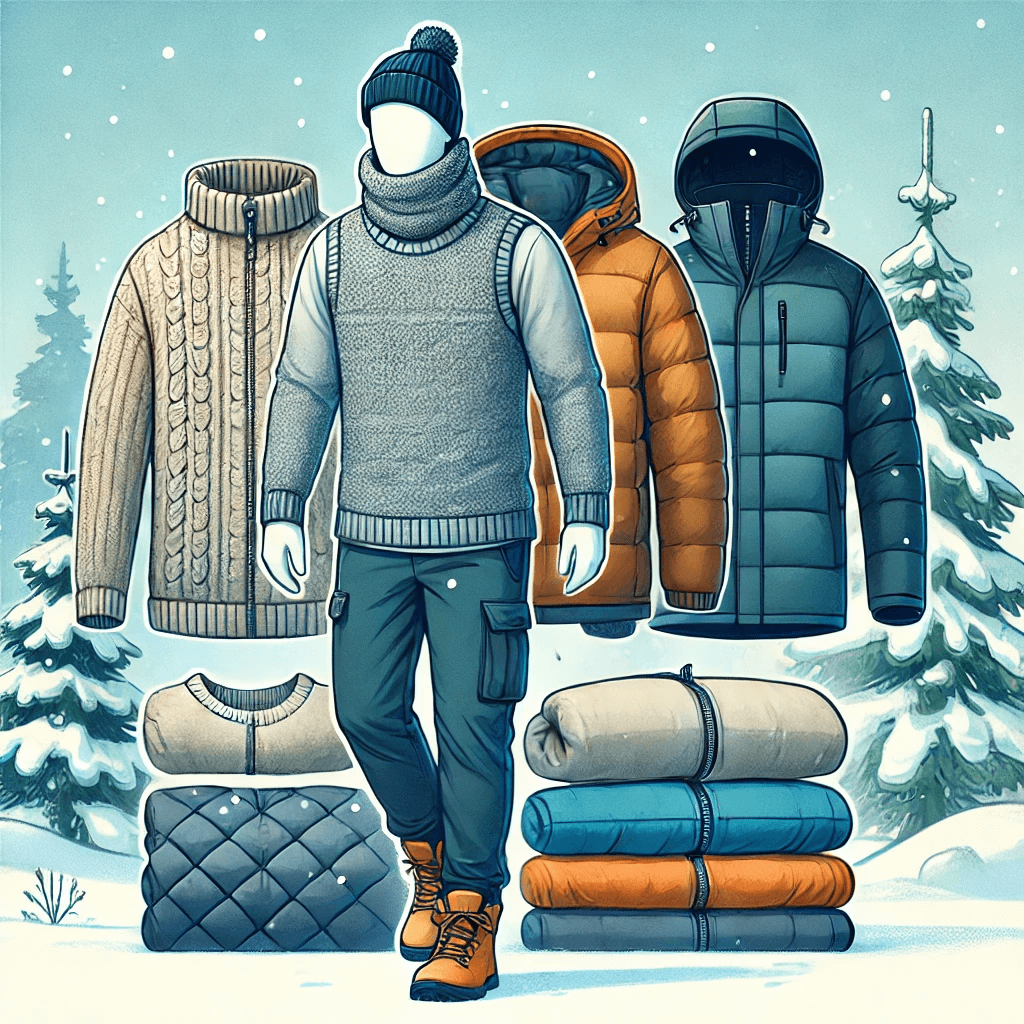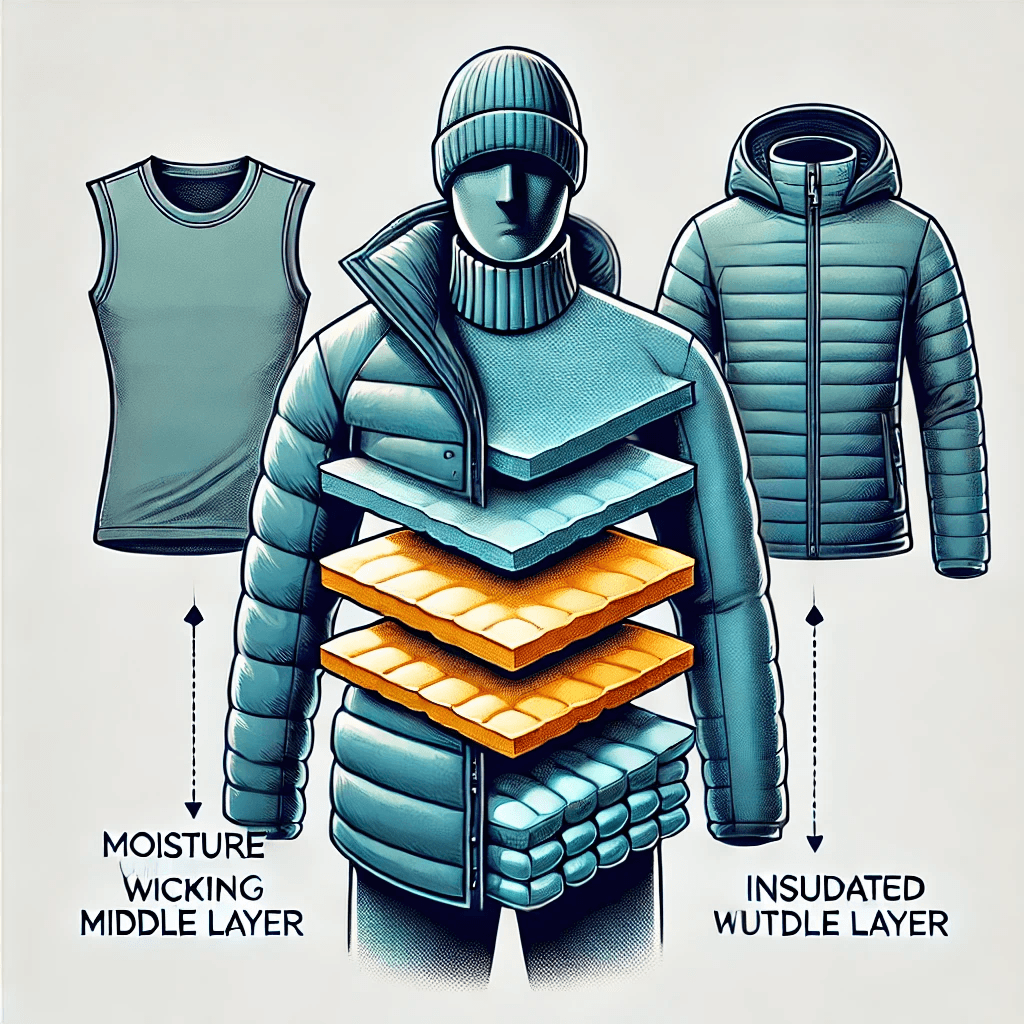Winter can be cold, and it’s important to dress in a way that keeps you warm without feeling bulky. Layering your clothes properly is the key to staying comfortable in cold weather. By using the right layers, you can adjust your outfit as the temperature changes and stay cozy all day long. This guide will teach you how to layer your clothes for winter in an easy-to-understand way.
Winter Layering
Layering clothes is important in winter because it helps you stay warm while also giving you the flexibility to adjust your clothing throughout the day. If you wear only one thick sweater, you might feel too hot when you go inside a warm building. On the other hand, wearing too few layers will leave you feeling cold in the winter air. That’s where layering comes in. By wearing several thinner layers, you can add or remove pieces based on the weather or how you feel.
Layering helps trap heat between the layers, which keeps you warm. It also allows for better movement, so you don’t feel stiff or uncomfortable. In this guide, you’ll learn the basics of layering and how to build the perfect outfit for winter.
Understanding the Basics of Layering
To understand how layering works, it’s helpful to know about the three main layers: the base layer, the middle layer, and the outer layer. Each layer has a special purpose and works together to keep you warm and comfortable.
Base Layer
This is the layer closest to your skin. It should be breathable and moisture-wicking to keep sweat away from your body.
Middle Layer
This layer is meant to provide insulation and keep your body warm. It traps heat and keeps you cozy.
Outer Layer
The outer layer protects you from wind, rain, and snow. It should be waterproof or water-resistant to keep you dry.
When choosing clothing for each layer, think about how the layers work together to trap heat and protect you from the cold. The right materials are also important to keep you comfortable.
The Base Layer: Starting with Comfort
The base layer is the first layer you put on. It is important because it touches your skin and needs to keep you dry. If you sweat and your base layer doesn’t wick away moisture, you will feel cold and uncomfortable.
- Materials: Look for base layers made from fabrics like merino wool or synthetic materials, such as polyester. These materials help move sweat away from your body and keep you dry.
- Fit: Your base layer should fit snugly but not be too tight. It should hug your body to trap warmth but still allow for movement.
- Breathability: Choose fabrics that allow air to pass through. This keeps moisture from building up on your skin.
A good base layer can make a big difference in how warm and comfortable you feel. Avoid cotton, as it traps moisture and can leave you feeling cold.
The Middle Layer: Adding Insulation
The middle layer provides insulation. Its job is to trap warmth and keep you cozy. Without a good middle layer, you might feel chilly even if you have a warm outer layer. There are different types of middle layers, depending on how much warmth you need.
- Fleece: Fleece is a lightweight option that traps heat well. It’s breathable, soft, and comfortable for everyday use.
- Down or Synthetic Jackets: If you need extra warmth, consider a down jacket or a synthetic insulation jacket. These options are very warm and work well in colder temperatures.
- Thickness: The thickness of your middle layer depends on how cold it is. In mild weather, a thin fleece layer is enough. In colder weather, you might need a thicker down jacket.
The middle layer is all about balance. You want something warm, but not too bulky, so you can move freely.
The Outer Layer: Protecting from the Elements
The outer layer is your shield against the wind, rain, and snow. It’s important to choose an outer layer that will protect you from the elements while still allowing for movement.
- Waterproof or Water-Resistant: The outer layer should be able to keep you dry. Look for jackets or coats that are waterproof or at least water-resistant.
- Windproof: Cold winds can make you feel much colder, so your outer layer should also block the wind.
- Breathability: Even though your outer layer needs to protect you from the weather, it should still allow air to flow through to prevent overheating.
Common options for the outer layer include rain jackets, puffer coats, and ski jackets. Choose the one that best suits your activity and the weather you’ll be facing.
Layering for Different Winter Activities
The way you layer your clothes may change depending on the activity you’re doing in the winter. Here are some tips for different situations:
- Outdoor Sports and Hiking: If you’re doing outdoor activities like hiking or skiing, you’ll need more breathable layers. A moisture-wicking base layer, a light fleece or jacket as the middle layer, and a lightweight but waterproof outer layer will help keep you comfortable as you move.
- Everyday Winter Wear: For everyday use, you might not need as many layers. A thermal shirt or base layer, paired with a warm sweater and a good coat, will keep you warm for daily errands and casual outings.
- Extremely Cold Conditions: If you’re going out in extreme cold, don’t be afraid to add an extra layer or two. A thick down jacket can be added as an additional middle layer, and make sure your outer layer is well-insulated and weatherproof.
Layering for different activities requires adjusting the thickness and breathability of your clothing to stay comfortable without overheating or getting too cold.
Additional Tips for Effective Layering

Here are some additional tips to help you layer your clothes effectively:
- Fit Matters: Make sure all your layers fit well. They should be snug enough to trap heat, but not so tight that they restrict movement.
- Flexibility: Choose layers that you can easily add or remove as needed. For example, if you get too warm, you should be able to take off your middle layer without too much trouble.
- Don’t Overdo It: You don’t need to wear five layers of clothing. Start with the basics—base, middle, and outer—and add layers only if needed.
Remember that layering is about balance. You want to feel warm, but also comfortable and able to move freely. You should always be able to adjust your clothing depending on your activity or the temperature.
Conclusion
Now that you know how to layer your clothes for winter, you can enjoy the season without worrying about being too cold or too hot. The key is to use three layers that work together to keep you comfortable: the base layer, which keeps moisture away and helps you stay dry; the middle layer, which adds warmth and insulation; and the outer layer, which protects you from the cold, wind, and wet weather. By understanding the purpose of each layer and choosing the right materials, you can enjoy winter activities with ease. With a little practice, layering will become second nature, and you’ll always be ready to face the winter chill.




